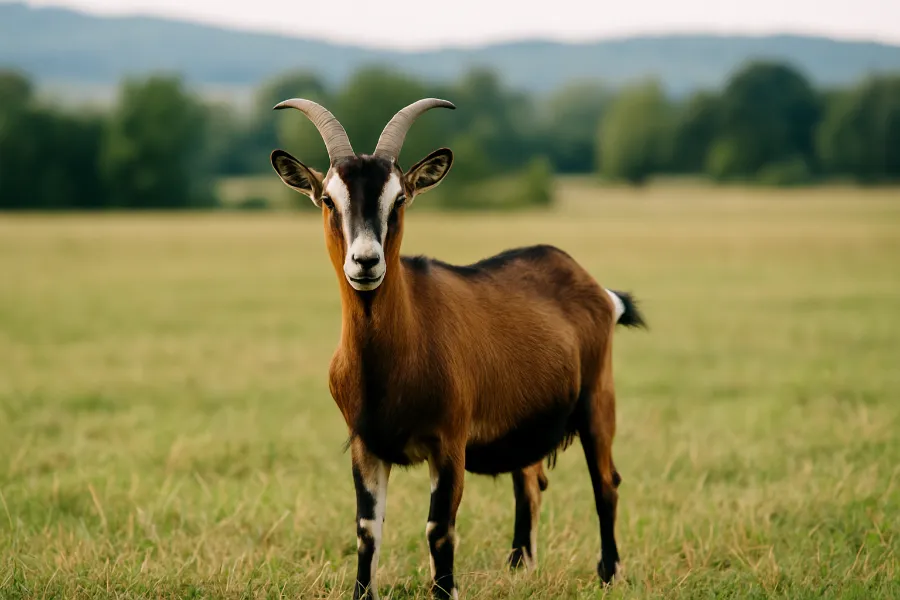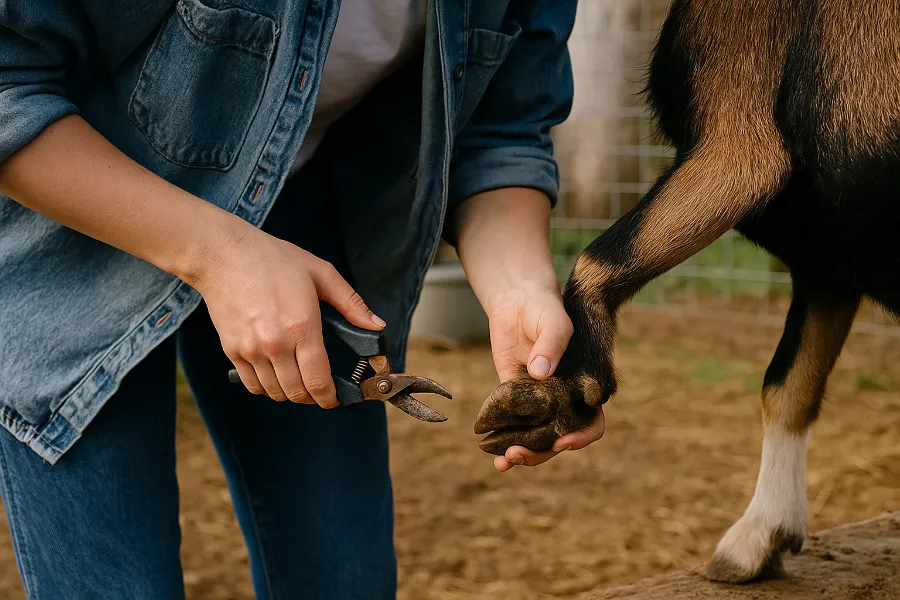When I first decided to bring alpine goats onto our little homestead, I didn’t realize how quickly they’d become not just livestock, but little characters in our daily routines. From greeting me in the morning to snuffling around for treats, they’ve woven themselves into the rhythm of life here. And yes — alpine goats is the focus keyword I whisper whenever I dream at night about goat barns, milk pails, or fencing repairs.
In this post, I’ll walk you through everything I’ve learned (sometimes the hard way) about raising alpine goats: why I believe they’re ideal, what you absolutely need to prepare, and how to maximize their potential — especially when it comes to milking, breeding, shelter, and daily care. Along the way, we’ll also talk about dairy goats, homesteading goats, French alpine goats, and alpine goat milk production per day — because these are the terms folks are searching for and deserve solid answers.
Why I Chose Alpine Goats (and Why Dairy Goats Matter for a Homestead)
Let me start with a confession: I didn’t begin with a master plan to raise dairy goats. I was simply drawn to their gentle eyes and curious noses. But as I dug into breeds, I kept hearing how Alpine goats are among the best dairy goats for small farms. In other words: they give solid volumes of milk, yet are adaptable, hardy, and manageable for a one-family homestead.
On the homestead, having reliable milk means a lot: fresh milk for drinking, yogurt, cheese, butter, even soap making. Goats are often easier to manage than cows, require less land, and can thrive on brush, shrubs, and weeds we might otherwise fight. When I think of homesteading goats, Alpines always stand out.
French Alpine Goats: Origins, Traits & What Sets Them Apart

If you trace the roots of “alpine goats,” you quickly land in the French Alps. Indeed, French Alpine goats were bred in mountainous terrain, tolerating cold, wind, and steep grazing grounds. Over generations, their descendants developed traits of endurance, strong legs, and above all — consistent milk production.
Here are some traits I love (and keep in mind) when working with French Alpine goats:
- They come in virtually any color or markings — there’s no fixed “Alpine look.”
- They have upright ears and typically horns (unless disbudded).
- Mature does tend to weigh around 135 lbs, and bucks 170+ lbs.
- They’re friendly, curious, and intelligent — but they also have strong wills.
- Their origin in mountain terrain gives them greater resilience in variable climates.
So when naming and describing my animals, I like to remind people: yes, these are French alpine goats, but today they live in Texas (or wherever you are) and adapt beautifully.
Alpine Goat Milk Production Per Day: What to Expect
One of the first questions I get from readers is: How much milk can an alpine doe give? That’s the heart of alpine goat milk production per day.
From my experience (and what I’ve gathered from working herds and breeder reports):
- A healthy, well-fed Alpine doe will average 1 to 1.5 gallons per day during peak lactation.
- In optimum conditions, some high-performing does may push toward 2 gallons per day.
- Their lactation window tends to be long — 9 to 10 months — and with good management you may milk for nearly a full year.
- Of course, yields vary based on genetics, feed, health, and milking consistency.
Every time I’ve had a doe drop in yield, I trace back to one of those factors (or sometimes two). Keeping track of daily amounts helps me notice declines early and take action.
Setting Up for Success: Housing, Fencing & Materials
Before the goats ever arrive, I put in serious effort building a secure, functional setup. The more time you put into infrastructure early, the fewer headaches later.
Shelter & Barning
Alpine goats don’t have to live in a palace, but they absolutely need dry, draft-free space. I aim for:
- At least 20–25 sq ft inside space per goat
- Sturdy roofing, walls, and cleanable floors (I use concrete or wood over gravel)
- Clean bedding (straw or shavings) changed frequently
- Good ventilation to reduce ammonia and humidity
- Access to shade in summer, and wind protection in winter
Fencing & Security
Goats are notorious escape artists. In fact, after we built our first seasonal fence, one Alpine had managed to shimmy next-door into the garden and sample tomatoes overnight. Lesson learned.
My current fence design:
- 4–5 ft tall woven wire fencing
- Top electric wire or hot wire strand to discourage climbing or leaning
- Strong gates and secure latches
- Proper corner posts braced well
- A “creep” fence section so kids can’t follow adults into feed areas
Feeding & Water Systems
To get that alpine goat milk production per day, diet is everything. My setup includes:
- Hay feeders that keep hay off the ground
- Grain troughs or buckets for supplemental feed
- Free-choice mineral containers (goat-specific mineral mix)
- Heated water tubs in winter or bucket heaters (goats drink a lot, especially in lactation)
- A milking stand (with headlock or stanchion) so the doe stays calm while milking
- Stainless steel pails, strainers, jars, teat dip, and cleaning supplies
Health & Maintenance Tools
I try to keep the essentials on hand before problems arise:
- Hoof trimmers
- Basic first aid kit
- Dewormers and wormer guide (used carefully, with fecal checks)
- Vaccines (e.g. CD&T)
- Brushes, grooming tools
- Kidding pens, heat lamps, colostrum (for new kids)
- Records or notebooks to track data (breeding dates, milk yields, health events)
Daily Life With Homesteading Goats
Once you have your infrastructure, daily management becomes the heart of success. Here’s what a “typical day” with homesteading goats looks like around here:
- Morning check: I walk through, check for odd behavior, limp legs, dirty udders, or signs of illness.
- Milking: Twice daily, about 12 hours apart, always same schedule. I wash udders, dip teats, filter milk, and chill quickly.
- Feeding & water: Refill hay, grain, minerals; check water (especially in freezing weather).
- Pasture rotation & browse time: If weather allows, goats get fresh browsing in fenced paddocks.
- Evening lock-up: I lock them in, top up bedding, and give a last water check.
This routine keeps things steady. When I deviate (vacations, storms, etc.), I often see drops in production or health issues.
Breeding, Kidding & Raising Kids
If you want your herd to sustain itself, breeding is inevitable. And with dairy goats, that means planning for kids and managing cycles of milking.
Breeding Basics
- I wait until a doe is ~80 lbs or more (or older than 7 months) before breeding
- Warm season is usually ideal, but timing depends on your climate
- Keep bucks separated until desired mating
- Track heat cycles, breeding dates, and confirm pregnancies (ultrasound or observation)
Gestation & Kidding
- Gestation is ~145–155 days (average ~150)
- I always prepare a clean kidding area with straw or shavings
- Heat lamps help in colder weather
- I keep colostrum (or colostrum replacer) on hand — first 24 hours are critical for kid immunity
- After birth, I monitor kids carefully, ensure they nurse (or bottle-feed if needed), and treat the doe’s udder carefully
Raising Kids
- Decide whether to dam-raise (kids nurse directly) or bottle-raise (helps with tame, human-friendly goats)
- Start offering hay and grain early
- Monitor growth, health, and deworming
Over time, some kids become future milkers, others might be sold or meat stock — depending on your goals.
Health, Nutrition & Troubleshooting
Even on best days, goats test you. But with vigilance, many issues are preventable.
Nutrition & Supplements
- Hay is the foundation — good grass or legume hay
- Grain for lactating does helps support production
- Free-choice minerals (goat blend)
- Baking soda to buffer rumen (especially after rich feed)
- Occasional high-energy treats like black oil sunflower seeds or molasses mixes
Hoof & Parasite Care
- Trim hooves every 4–6 weeks
- Rotate pastures to break parasite cycles
- Use fecal egg counts before deworming indiscriminately
- Keep bedding clean and dry
Common Illnesses
- Mastitis: Spot-check udders for heat, swelling, or odd milk
- Johne’s disease, CL, or internal parasites — maintain disease-free stock when possible
- Respiratory issues from poor ventilation or poor bedding
- Ketosis in high-producing does — avoid drastic feed changes
Whenever I see a goat act off — dull eyes, loss of appetite, isolation — I isolate and assess: nutrition, temperature, dehydration. The earlier I intervene, the better.
Why Alpine Goats Are My Favorite Homesteading Goats
You might wonder: Why stick with alpine goats when there are Nubians, Toggenburgs, Saanens, and many others? Here’s what keeps me loyal:
- They balance good dairy goat production with manageable temperament
- Their adaptability makes them better in varied climates
- They’re efficient — feed converts to milk well
- Their personalities are engaging; they bond with people
- Their robustness means fewer health dramas (with proper care)
In short: they hit a sweet spot for homesteaders who want real milk, friendly animals, and manageable upkeep.
Common Challenges and How I Tackle Them
No journey is perfect. Here are the hurdles I’ve faced raising alpine goats — and how I workaround them:
- Fence failures: I’ve reinforced weak spots, added hot wire strands, and retrained goats to respect boundaries.
- Too much milk: When I get overflow, I make cheese, freeze milk, or barter with neighbors.
- Predator pressure: I use secure barns, guardian dogs, and predator-proof fencing.
- Illness spikes: In cold or wet seasons, I increase monitoring, feed quality, and optimize shelter.
- Breeding surprises: Sometimes does kid unplanned — which taught me never to skip monitoring. Always plan so you’re ready.

Final Thoughts: Welcoming Alpine Goats Into Your Life
Bringing alpine goats onto your land is more than a farming project — it becomes part of your daily rhythms, your joys, and your challenges. But in all my time with them, I’ve found that they repay you richly: milk, companionship, land clearers, and a connection to something simpler and more grounded.
If you’re building a homestead, I believe few animals offer what alpine goats do. They embody what homesteading goats ought to be: useful, beautiful, engaging, and productive. And when you name your doe and she leans into your hand while milking? That’s a reward in itself.
FAQ
Alpine goats are prized for their high milk production, hardiness, and adaptability to different climates. They are also friendly and intelligent, making them great for homesteads.
On average, an Alpine doe produces 1–1.5 gallons of milk daily, with some high performers reaching 2 gallons. Their lactation typically lasts 9–10 months.
Yes, Alpine goats are excellent homesteading goats because they provide steady milk, help clear land, and adapt well to small farms. They’re also manageable in size and temperament.
They thrive on good-quality hay, browse, and supplemental grain for lactating does. Free-choice minerals and fresh water are essential to keep them healthy and productive.
French Alpine goats originated in the Alps and are known for their endurance and diverse color patterns. Their genetics contribute to their strong milk-producing abilities and adaptability.
Alpines need dry, draft-free shelters with good ventilation and clean bedding. Secure fencing is also a must, as they are curious escape artists.
With proper care, Alpine goats typically live 12–14 years. During that time, they can provide many productive seasons of milk and companionship.













